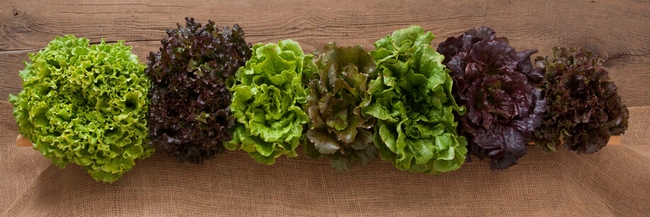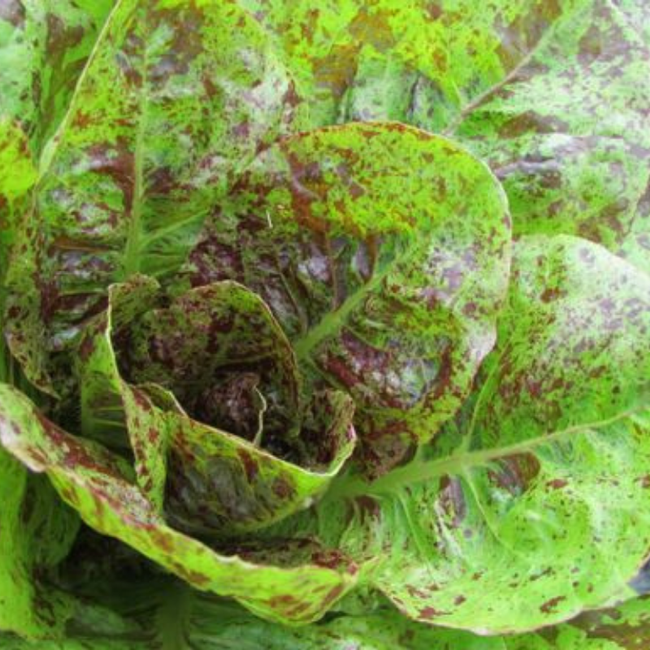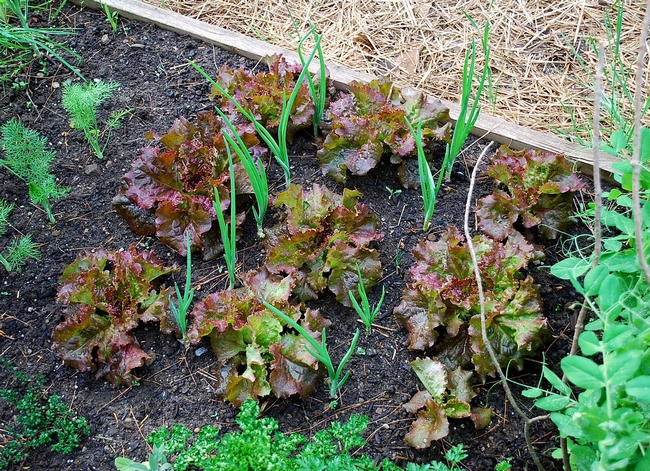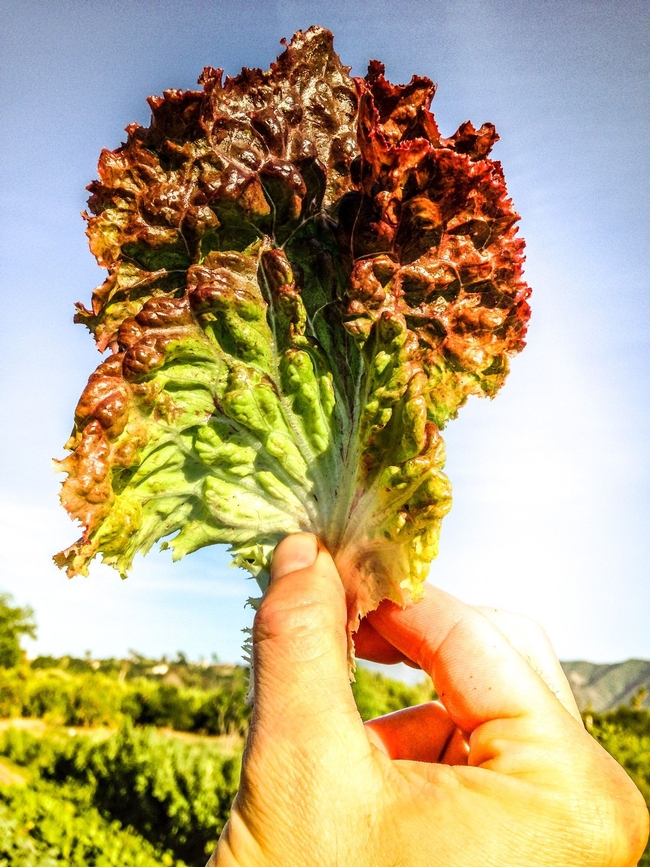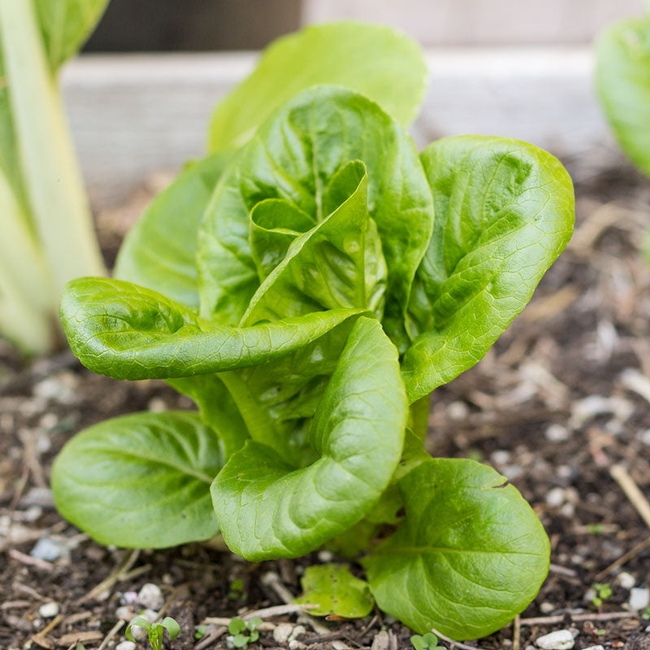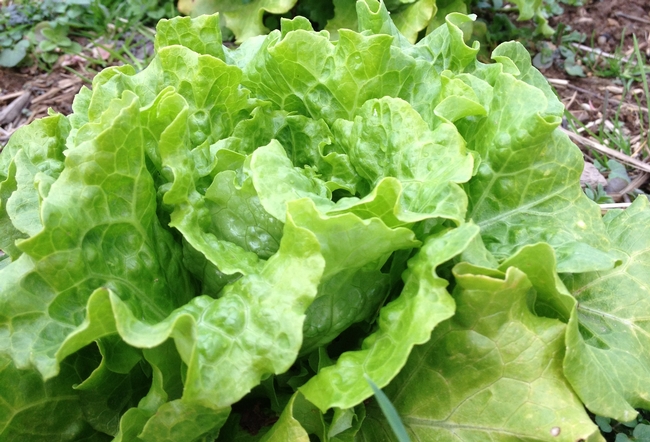By Yvonne Rasmussen, UC Master Gardener of Napa County
Did you know you can grow lettuce year-round? Generally, lettuce is considered a cool-season crop but some varieties are adapted to warmer weather. With a few tricks, you can keep them cool for year-round harvesting.
Why bother growing your own lettuce? Because there are so many wonderful types, many of which we never see in stores. Lettuces come in myriad colors, shapes, textures and, yes, even flavors. Their fun names tempt you into buying seeds just to see what the results are like. Speckled Trout, Red Sails, Summer Batavia, Little Gem, Summer Crisp—who can resist those?
Read seed packets, seed catalogs and plant labels to find varieties adapted to warm weather. Look for the recommended planting time and length of time to harvest. Some will even regrow after you cut them, so you get even more greens for your money and time.
If you plant from seed, you have more choices, but lettuce seeds are small and can be difficult to spread evenly. If you overplant, you can always thin the young leaves and enjoy the thinnings in salads. Some seed companies sell biodegradable seeding tape with the seed already spaced out for you. Using the tape, you can plant perfect rows of well-spaced lettuces.
You can also make your own seed tape using toilet paper and flour. If you want a fun project, you can find how-to videos for making seed tape online.
The Napa County Master Gardeners have been doing home garden trials on the best planting time for different lettuce varieties. The trials are ongoing but we will report our findings when they conclude.
Lettuces prefer light, fluffy soil and regular watering. They may need some shade when it is really hot. Add compost and a little extra nitrogen just before planting. A little alfalfa meal or other organic source of nitrogen will help them get started and grow strong. Beware that dogs (and some wild critters) may be attracted to bone meal or feather meal.
If you purchase lettuce seedlings, there may be multiple lettuces in each cell. Carefully tease apart the roots and plant the individual seedlings far enough apart—six to ten inches, depending on variety—so they have room to reach full size. Water thoroughly after planting and keep the top 1 to 2 inches moist. Seedlings may need a little extra water until they develop their new roots.
Harvest leaf lettuce from the outside, letting the inner leaves mature. Harvest head lettuce by taking the whole head. Some leaf lettuces can be cut down to the base and, as long as it isn't uprooted, the base will produce more leaves for a second harvest.
You can plant lettuce between other, taller crops that will provide a little shade as both grow. Being shallow rooted, lettuce also works well in containers, and you can move the containers around to take advantage of morning sun and afternoon shade.
Protect young seedlings from snails and slugs with an iron phosphate-based bait. Make sure the product is intended for use on vegetable crops. Protect young seedlings from birds with row cover, a material available at most nurseries. Bury the cloth edges or tack down the corners so birds cannot get underneath.
Some people use overturned plastic berry baskets to cover their baby plants. You may need to pin these down with a small wooden skewer or U-shaped irrigation staples. Once the plants are a few inches tall, it may be safe to remove the baskets. Or maybe not. Depending on how hungry your birds are, you may need to keep seedlings under row covers.
Harvest lettuces in the morning when they are crisp. Wash well, shake out excess water (a salad spinner is a good investment) and refrigerate in a lidded container with a cloth or paper towel to keep them fresh and moist.
If you grow salad greens between your other vegetables, you can enjoy hearty salads from your own garden all summer.
Got Garden Questions? Contact our Help Desk. The team is working remotely so please submit your questions through our diagnosis form, sending any photos to mastergardeners@countyofnapa.org or leave a detailed message at 707- 253-4143. A Master Gardener will get back to you by phone or email. For more information visit https://napamg.ucanr.edu or find us on Facebook or Instagram, UC Master Gardeners of Napa County.
